Top Rankings
Sanford School District ranks among the top 20% of public school district in Maine for:
Category
Attribute
Diversity
Most diverse schools (Top 1%)
Community Size
Largest student body (number of students) (Top 1%)
For the 2025 school year, there are 3 public preschools serving 1,241 students in Sanford School District. This district's average pre testing ranking is 4/10, which is in the bottom 50% of public pre schools in Maine.
Public Preschools in Sanford School District have an average math proficiency score of 80% (versus the Maine public pre school average of 79%), and reading proficiency score of 83% (versus the 82% statewide average).
Minority enrollment is 15% of the student body (majority Hispanic and Black), which is more than the Maine public preschool average of 14% (majority Black).
Overview
This School District
This State (ME)
# Schools
5 Schools
259 Schools
# Students
3,263 Students
59,048 Students
# Teachers
255 Teachers
5,438 Teachers
Student : Teacher Ratio
13:1
13:1
District Rank
Sanford School District, which is ranked within the bottom 50% of all 191 school districts in Maine (based off of combined math and reading proficiency testing data) for the 2021-2022 school year.
The school district's graduation rate of 85% has increased from 82% over five school years.
Overall District Rank
#160 out of 222 school districts
(Bottom 50%)
(Bottom 50%)
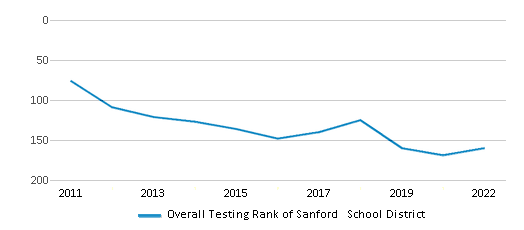
Math Test Scores (% Proficient)
78%
82%
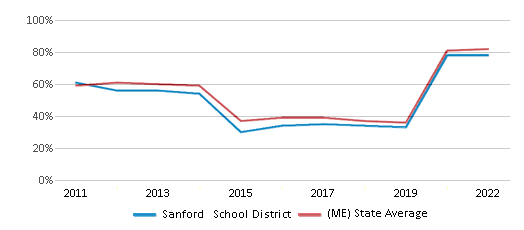
Reading/Language Arts Test Scores (% Proficient)
79%
84%
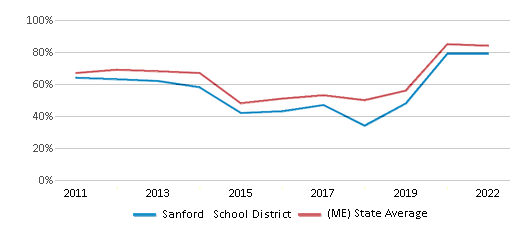
Science Test Scores (% Proficient)
28%
37%
Graduation Rate
85%
86%
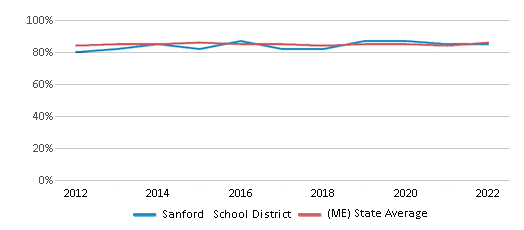
Students by Ethnicity:
Diversity Score
0.28
0.26
# American Indian Students
3 Students
341 Students
% American Indian Students
n/a
1%
# Asian Students
45 Students
561 Students
% Asian Students
1%
1%
# Hispanic Students
152 Students
1,995 Students
% Hispanic Students
5%
3%
# Black Students
127 Students
3,146 Students
% Black Students
4%
5%
# White Students
2,756 Students
50,694 Students
% White Students
85%
86%
# Hawaiian Students
3 Students
47 Students
% Hawaiian Students
n/a
n/a
# Two or more races Students
177 Students
2,264 Students
% of Two or more races Students
5%
4%
Students by Grade:
# Students in PK Grade:
96
6,275
# Students in K Grade:
217
9,065
# Students in 1st Grade:
205
8,751
# Students in 2nd Grade:
273
8,998
# Students in 3rd Grade:
202
7,460
# Students in 4th Grade:
248
6,832
# Students in 5th Grade:
217
5,562
# Students in 6th Grade:
202
2,965
# Students in 7th Grade:
248
1,380
# Students in 8th Grade:
256
1,417
# Students in 9th Grade:
280
82
# Students in 10th Grade:
271
89
# Students in 11th Grade:
282
86
# Students in 12th Grade:
266
86
# Ungraded Students:
-
-
District Revenue and Spending
The revenue/student of $20,874 in this school district is less than the state median of $21,600. The school district revenue/student has stayed relatively flat over four school years.
The school district's spending/student of $22,789 is higher than the state median of $21,191. The school district spending/student has stayed relatively flat over four school years.
Total Revenue
$68 MM
$3,617 MM
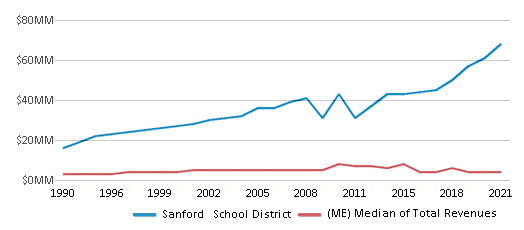
Spending
$74 MM
$3,549 MM
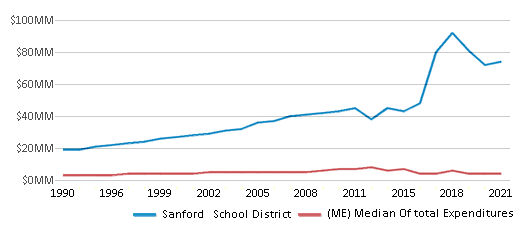
Revenue / Student
$20,874
$21,600
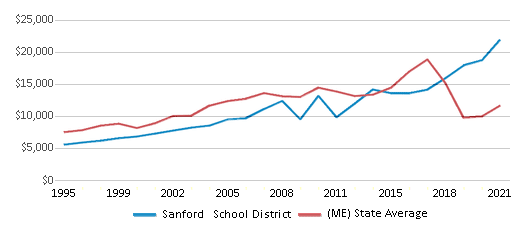
Spending / Student
$22,789
$21,191
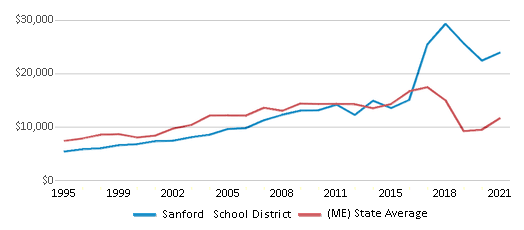
Best Sanford School District Public Preschools (2025)
School
(Math and Reading Proficiency)
(Math and Reading Proficiency)
Location
Grades
Students
Rank: #11.
Margaret Chase Smith
(Math: 85-89% | Reading: 90-94%)
Rank:
Rank:
9/
Top 20%10
248 Twombley Rd
Sanford, ME 04073
(207) 324-7586
Sanford, ME 04073
(207) 324-7586
Grades: PK-4
| 439 students
Rank: #22.
Sanford Pride Elementary School
(Math: 75-79% | Reading: 80-84%)
Rank:
Rank:
4/
Bottom 50%10
708 Main Street
Sanford, ME 04073
(207) 324-8454
Sanford, ME 04073
(207) 324-8454
Grades: PK-4
| 378 students
Rank: #33.
Carl J Lamb School
(Math: 75-79% | Reading: 75-79%)
Rank:
Rank:
3/
Bottom 50%10
233 Shaws Ridge Road
Springvale, ME 04083
(207) 324-8481
Springvale, ME 04083
(207) 324-8481
Grades: PK-4
| 424 students
Recent Articles

What Is A Charter School?
Explore the world of charter schools in this comprehensive guide. Learn about their history, how they operate, and the pros and cons of this educational innovation. Discover key facts about charter schools, including admission policies, demographics, and funding, as well as what to look for when considering a charter school for your child.

10 Reasons Why High School Sports Benefit Students
Discover the 10 compelling reasons why high school sports are beneficial for students. This comprehensive article explores how athletics enhance academic performance, foster personal growth, and develop crucial life skills. From improved fitness and time management to leadership development and community representation, learn why participating in high school sports can be a game-changer for students' overall success and well-being.

February 05, 2025
Understanding the U.S. Department of Education: Structure, Impact, and EvolutionWe explore how the Department of Education shapes American education, from its cabinet-level leadership to its impact on millions of students, written for general audiences seeking clarity on this vital institution.





